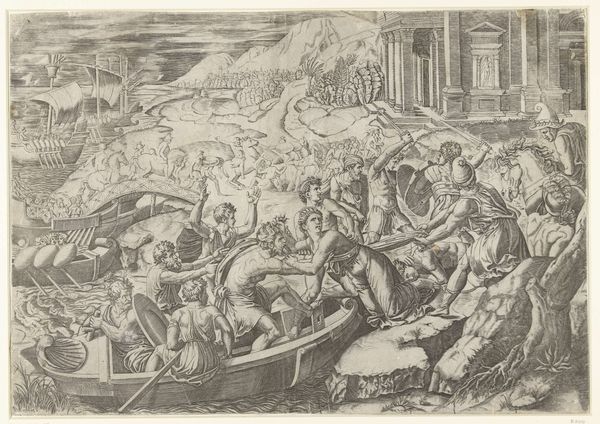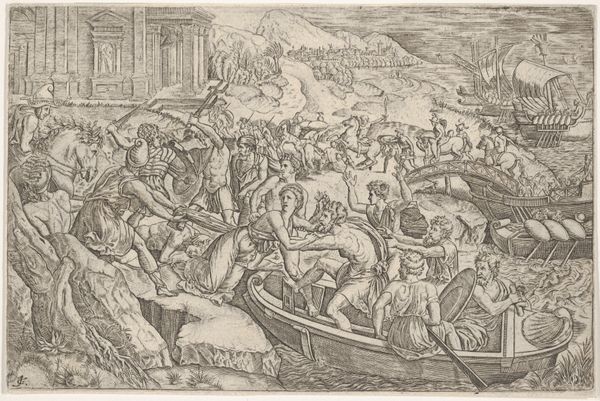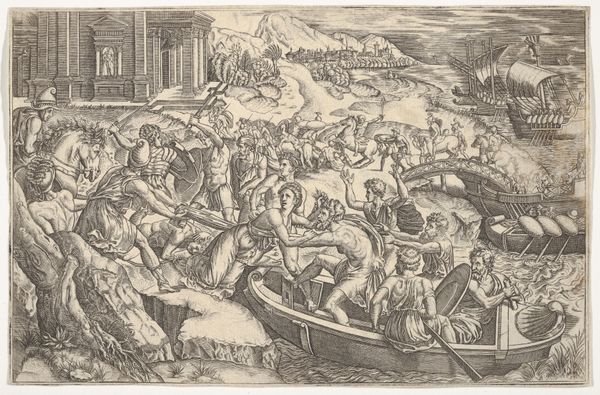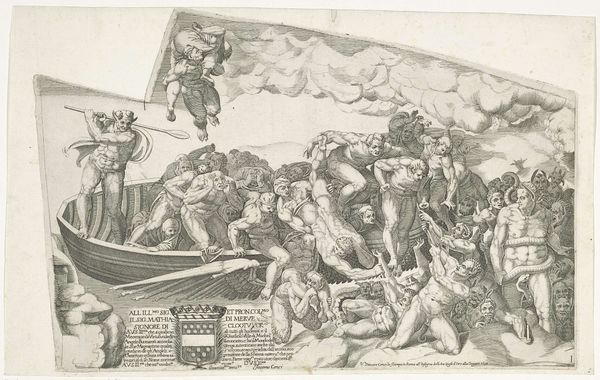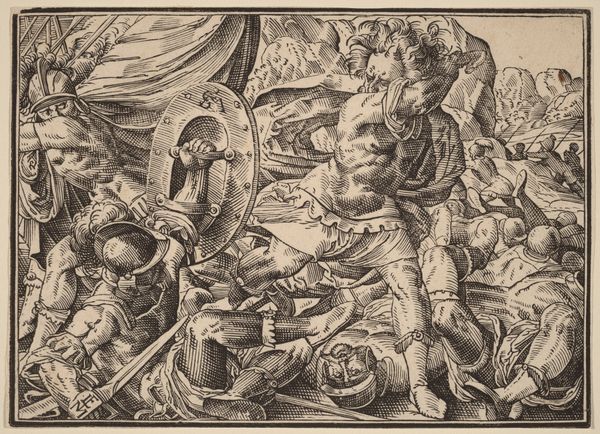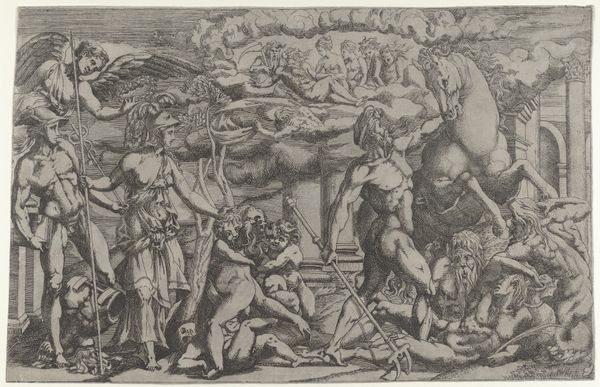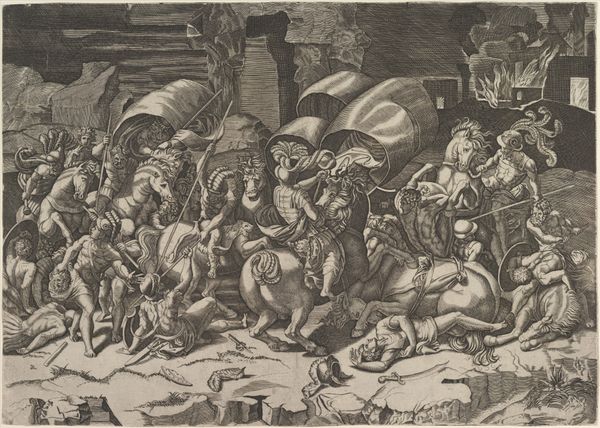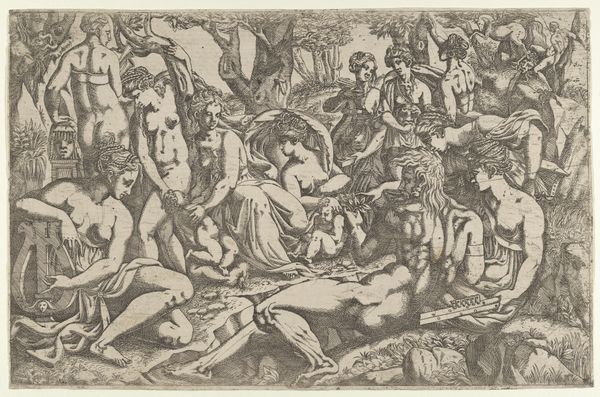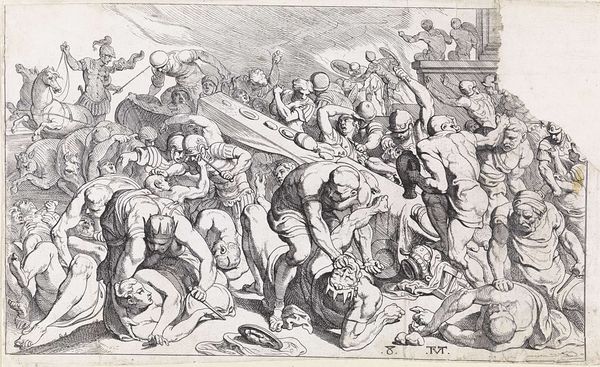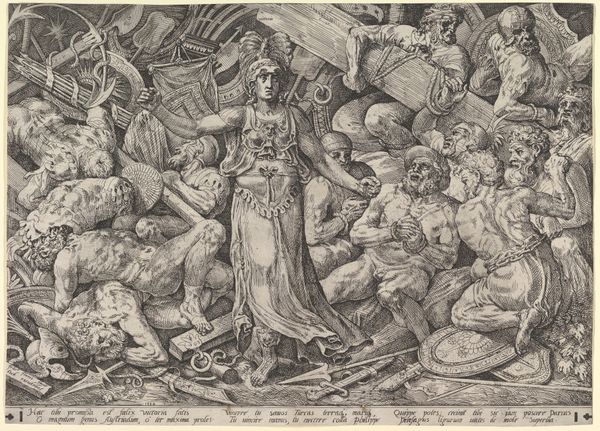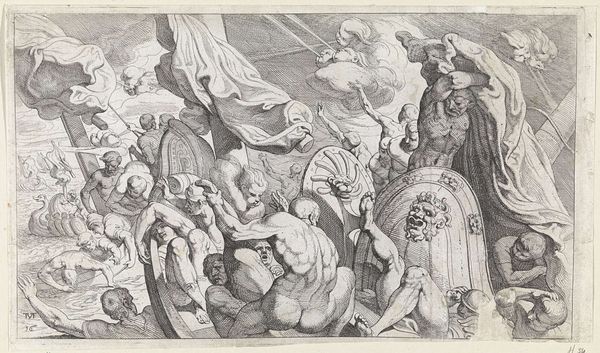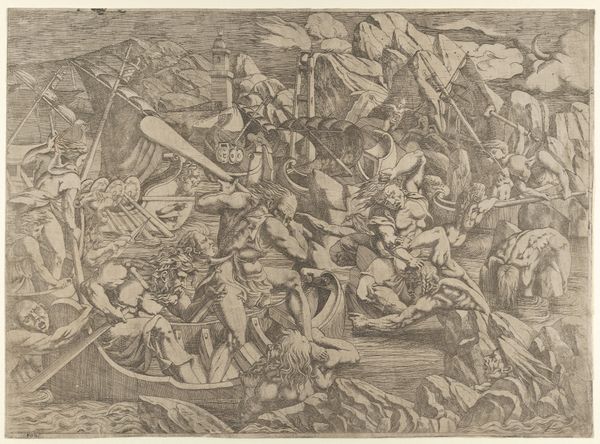
print, engraving
#
medieval
#
narrative-art
#
pen drawing
# print
#
landscape
#
figuration
#
ink line art
#
history-painting
#
engraving
Dimensions: height 375 mm, width 485 mm
Copyright: Rijks Museum: Open Domain
Editor: So, this engraving, "The Shipwreck of Paul" by Bartholomeus Willemsz. Dolendo, dating from between 1589 and 1626, feels incredibly chaotic. There's so much happening, so many figures crammed into the scene. What stands out to you about this piece? Curator: Well, immediately I consider the social and political context. This print was created in a time of religious upheaval and exploration. Prints like this weren’t just art, they were a primary way of disseminating information and shaping public opinion, particularly around religious narratives. Think about the role the story of Paul's shipwreck plays in asserting the power of faith against the unpredictable forces of nature. Editor: So it's more than just illustrating a biblical event? Curator: Precisely. How does Dolendo visually depict this power dynamic? Consider the composition. The shipwreck becomes almost a stage, a space for displaying not only suffering but also the implied strength of faith in the face of disaster. Who seems to be in control of the narrative and the chaotic space? Editor: I see what you mean. Paul and whoever is next to him, amidst all the struggle, remain very still, as though detached. But what about the artistic choices themselves? The very active engraving style feels intentional in creating this frenzied feeling. Curator: Exactly. The use of line contributes to that sense of dramatic turmoil but it’s also rooted in artistic traditions. The style served both an aesthetic purpose and a political one. The market was developing, with certain types of images being in more demand and prints made it all available for different audiences. How was the public meant to respond? Editor: So this engraving isn't just a picture of a shipwreck. It's making a statement about faith and social stability in a time of uncertainty. That’s insightful. Curator: Precisely. It speaks volumes about how art functions as a tool for ideological communication and the reflection of social anxieties.
Comments
No comments
Be the first to comment and join the conversation on the ultimate creative platform.
